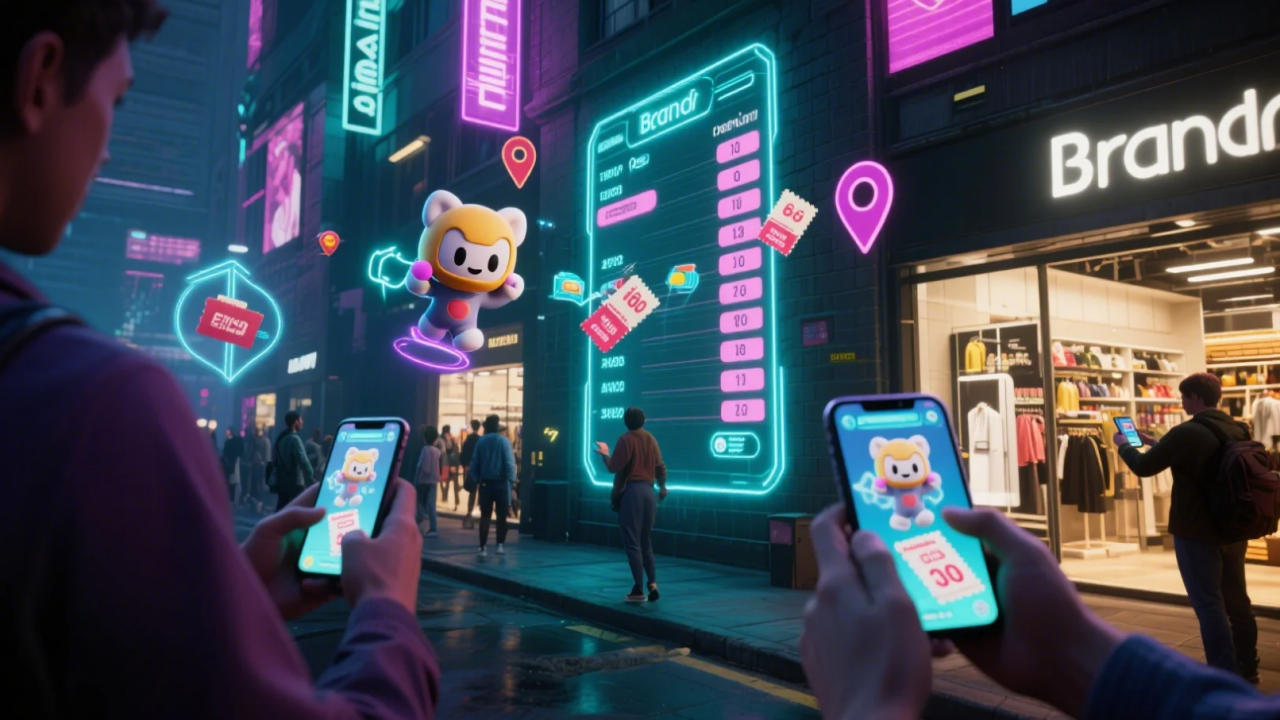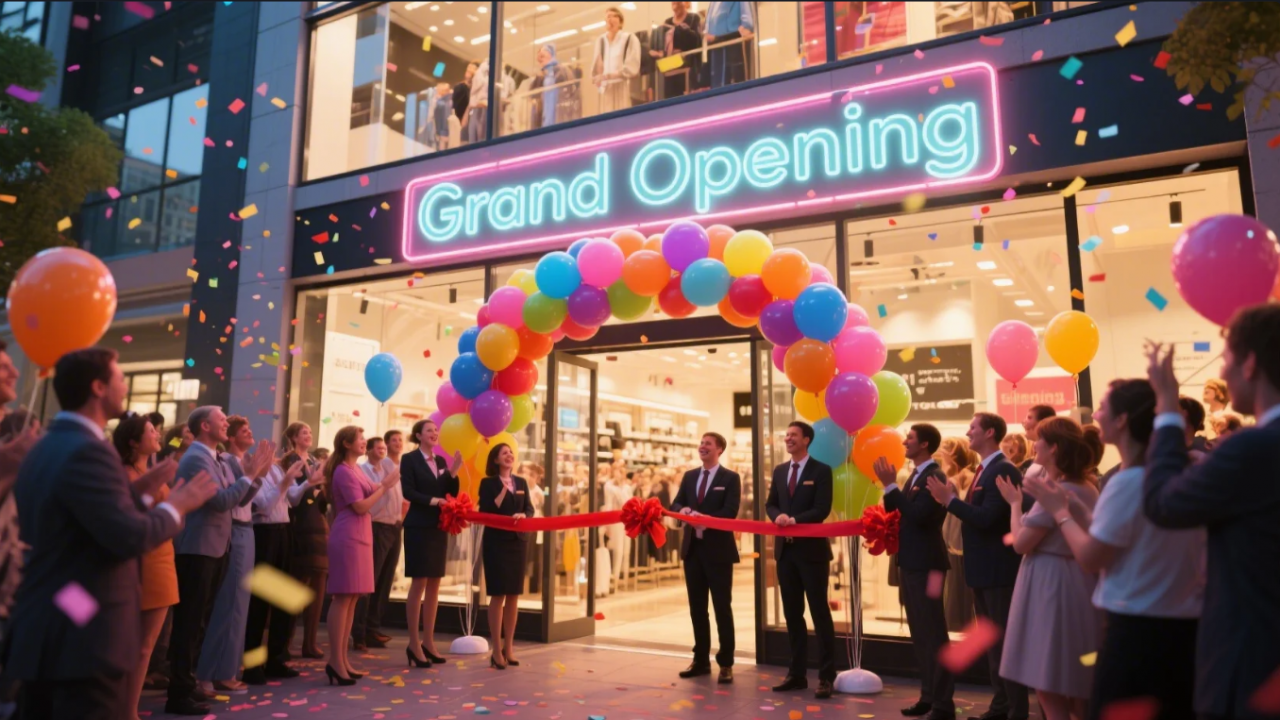Introduction
Gen Z, who grew up with smartphones in their hands and technology at their fingertips, is changing the face of travel retail and duty-free purchasing. To keep up with their digital lifestyle, this generation has high expectations for tech-driven and intuitive experiences. In response, retailers in the travel sector are being inventive and flexible to stay current. They are using augmented visuals and experiences to make shopping more immersive at travel shopping hubs like airport duty-free zones.
What is travel retail?
Travel retail is an important marketing niche where the primary aim is to target travelers at duty free zones like airports and cruise terminals. E-commerce and luxury brands use travel retailing for offline and online marketing channels. This helps them reach out to more customers at various steps of their travel journey.
Creating an interactive and smooth customer experience is a vital component of retail marketing and augmented reality exactly does that. It provides a perfect fusion of digital elements with retail outlets that leads to immersive in-store interactions at travel shopping hubs.
Why AR is gaining traction in travel retail?
52% of adults in Generation Z love to travel frequently, comparable to millennials. Moreover, travelers have become more cautious of their spendings and prefer immersive experiences over luxuries. A demand for quick and interactive experiences has led to impulsive shopping behaviors. This makes the use of augmented reality inevitable for travel retail spaces.
Travel retailers are creating immersive experiences to engage customers. From interactive displays to virtual try-on solutions, they are integrating augmented components to lure more customers in. This helps retail brands and stores connect with customers on a personal level by producing experiences that are more relatable to everyone.
Applications of AR in Travel Retail Landscape
Interactive product displays in airport duty-free shops

Source: arvrjourney
Retail stores in traveling spaces can use interactive product displays to catch the eye of passersby travelers. These displays are equipped with motion sensors that offer real-time engagement. Users can interact with product catalogs and touchscreen maps.
AR-powered visuals are overlaid on physical objects and it produces captivating product displays. Travelers can see through these displays that give the interaction a fresh and futuristic touch. Advertising your services and products in an immersive and entertaining manner leads to more sales and brand recall.
Virtual try-on for fashion products
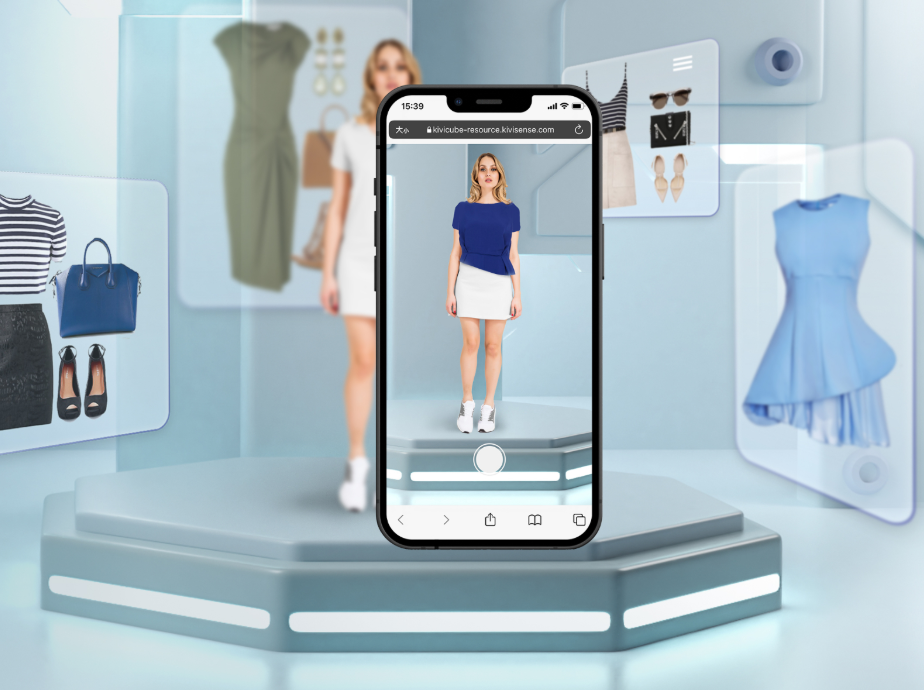
AR-enhanced virtual try-ons make checking out new products much more convenient than ever. Travelers can virtually wear and see all kinds of fashion products like clothes, jewelry pieces, shoes, and other accessories. This is done through AR apps of fashion brands or websites using smartphones.
Retail stores at airports are using AR mirrors and virtual fitting rooms so customers can try on products with convenience. These touchless interactions are hygienic too, as customers won’t need to take products in hand to try them. This leads to more time spent on stores and better engagement.
Smartphone navigation
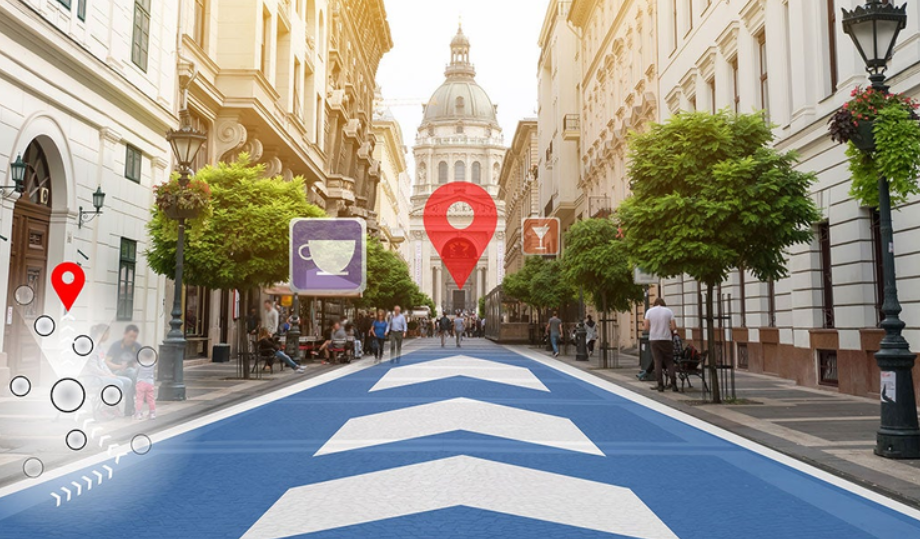
Source: blog.adobe
Interactive wayfinding has become possible with AR-driven smartphone navigation systems. Customers can use overlaid digital arrows and signage to find any specific retail stores, restaurants, and other shopping areas. AR apps can display personalized route details and guide travelers through complex and confusing spaces.
This is also very helpful for individuals having vision or mobility issues, so they can navigate their path without any stress. Dubai airport is a good example of an AR-powered indoor navigation system. The airport makes it easier for travelers to move through its complex layout with the help of smartphones. Users can see virtual arrows and directions, interact with displays in shops, and find immersive overlays on screens.
Store Front Digitalization with AR

Travel retailers can use augmentation to improve the in-store shopping experience of customers. This involves storefront digitalization with interactive displays and immersive storytelling techniques. Augmented visuals make your storefront more eye-catching and engaging for customers, with creative marketing techniques.
For example, Watson and Laurier have created a virtual summer garden in full bloom with augmented reality. Users can scan the Watson signboard with phones to enter a digital world. Moreover, they can see 3D puffy guardian cottons arising from the pack. This dynamic interaction makes shopping in stores more fun with dynamic and augmented visuals.
Interactive experiences for entertainment
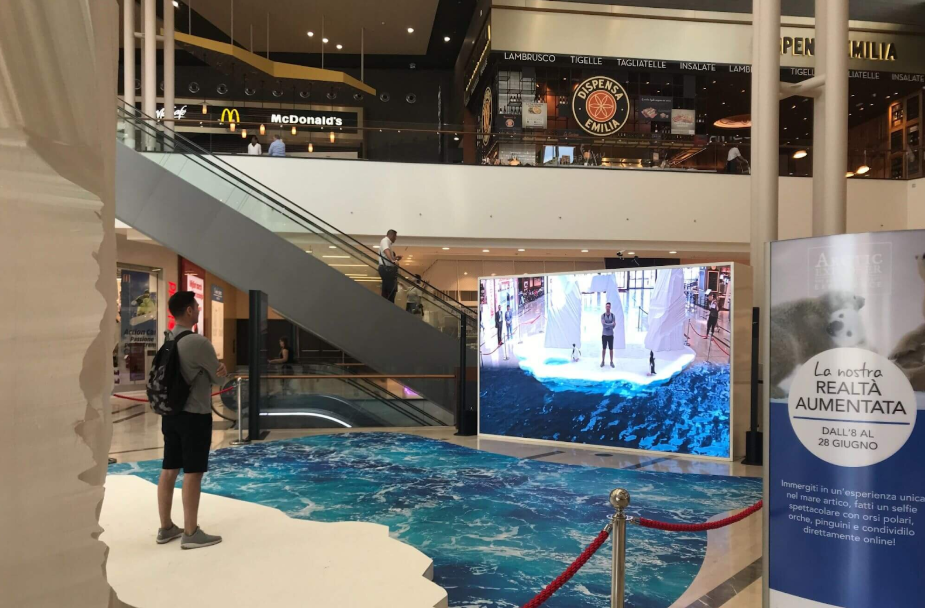
Source: INDE
Entertainment venues at travel retail sites like airport lounges and gaming zones can be made more fun with augmented reality. Use of interactive digital signage can make the whole environment filled with some unique and immersive experiences for travelers.
The visiting is made more futuristic with AR-powered installations, such as interactive LED displays and LCD video walls. This changes the previously boring waiting areas into fun-filled gaming zones where travelers can explore a whole lot of immersive activities during their overlays. Retailers can use this time to connect with customers and advertise their merchandise through AR.
For example, Schiphol Airport, Netherlands is making use of augmented and virtual reality in its retail outlets. AR overlays give customers access to information about products through AR apps. Users can also see any available flash deals, exclusive discounts and promotions, and hidden offerings. By hunting on secret AR tokens, buyers can get special discount vouchers through gamification of content.
Benefits of AR in travel retail
Increased engagement and time spent in stores
Augmented reality offers such immersive interactions that drive travelers to explore more and more. This urge to experience something extraordinary and innovative keeps them hooked. As a consequence, they spend more time in stores to experience the magic of AR-powered interactions. This will lead to higher engagement and conversion rates at stores.
Higher conversion rates and sales uplift
Innovative marketing campaigns powered by augmented reality tech, help retailers create awareness about their brand. Use of interactive digital showcases, with a touch of loyalty programs and special discounts, lure more customers in. This sparks new trends and invites more and more foot traffic, which is translated to high conversion rates and many times more sales.
Improved brand loyalty through memorable experiences
Use of AR apps can make the travel retail experience quite happening. Besides interactive displays of products, AR can also help retailers update their data, promotional details, and new offerings easily. AR apps can alert users and show personalized latest deals and special discounts. This way, customers feel seen and valued. They become loyal to a brand and come back again and again.
Case studies for AR Travel retail
Example 1: Luxury brand using AR for virtual try-on
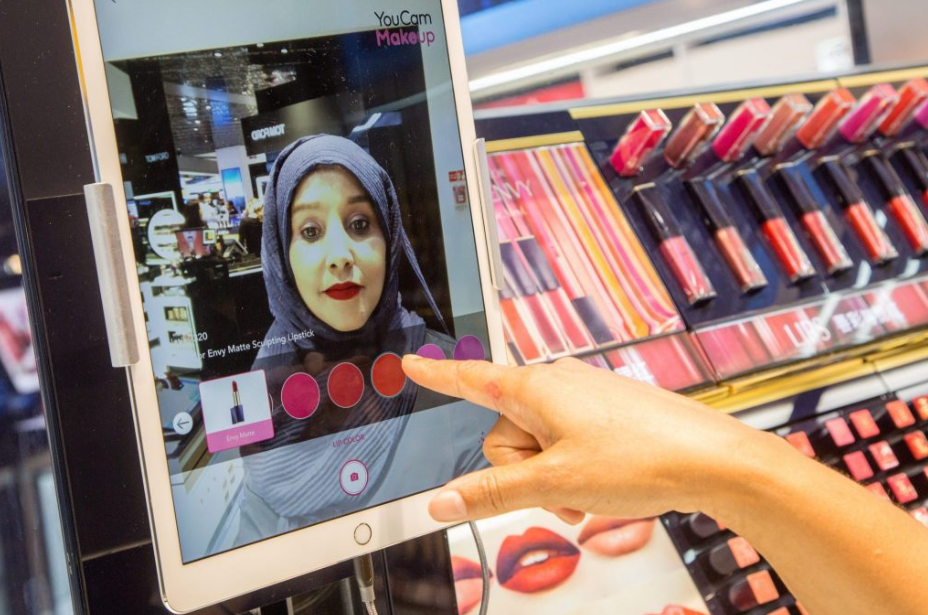
Source: Skift
As travelers have very little time on hand for shopping, AR try-ons offer an efficient and quick way to check out makeup or other beauty products. Big luxury brand names, like global travel retailer Dufry, offer in-store and web-based make-up try-ons for 15 brands. Some popular names using Dufry’s AR-powered solutions include Benefit, Kylie Cosmetics, Guerlain, and Huda Beauty.
Products at travel retail shops are often customized keeping in mind the needs of travelers. Therefore, it is important to give them a chance to test them to make sure the color, size, and other factors are what the user is looking for. This leads to increased conversion rates and better customer volume at travel retail shops.
A famous case of AR magic mirrors is depicted by Heart On Fire’s jewelry try-on solution. The known Diamond brand has made use of augmented reality mirrors to advertise their exquisite diamond jewelry pieces. They can virtually ‘’wear’’ and see necklaces, earrings, and bracelets upon their reflections in the mirrors. Realistic display of items helps them analyze the diamond cutting and placement with fine detailing. They can make buying decisions more confidently. This increases their satisfaction and leads to lower return rates and better brand loyalty.
Example 2: Airport duty-free integrating AR for promotional campaigns
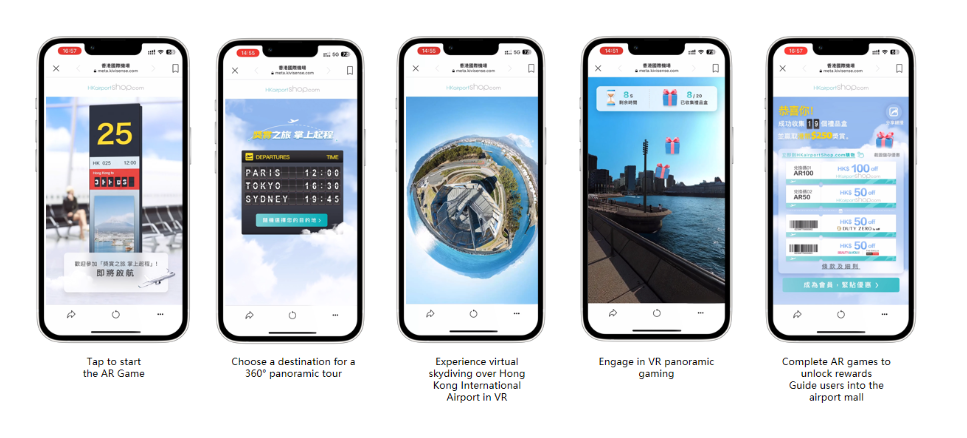
Airports are one of the major travel retail sites and integration of augmented reality makes duty-free shopping much more interactive. For example, Hong Kong International Airport, in partnership with Kivisense, has generated an epic adventure powered by AR. You can take virtual flights to any part of the world with our cutting-edge AR gyroscope technology.
Without taking a step out of your home, you can experience the city vibes in 360 degrees. The fun part, their ‘DepARture to Rewards‘ offer lets you collect virtual gifts in a gamified way. You can embark on virtual journeys and win many exciting prizes, experiencing technology at your fingertips.
Conclusion
Global travel retail sector is working towards fulfilling the expectations of Gen-Z with more and more immersive offerings. Digital solutions, specially innovative experiences powered by augmented reality, are becoming the main tools to increase engagement and foot traffic. Kivisense is a Sino-French venture that offers cutting-edge augmented reality, virtual reality, and artificial intelligence-based solutions for e-commerce and retail sectors. You can contact us to maximize your ROIs with innovative solutions.


